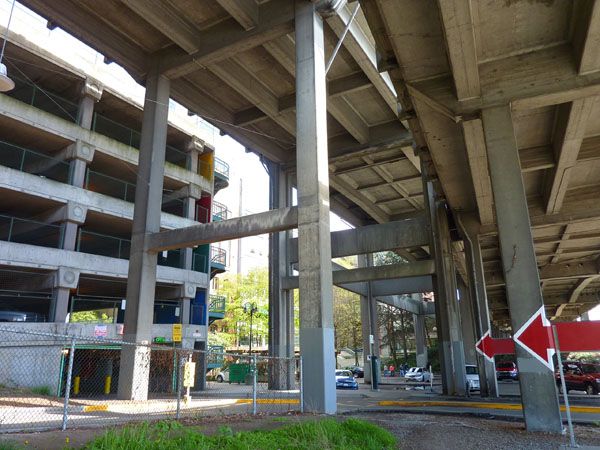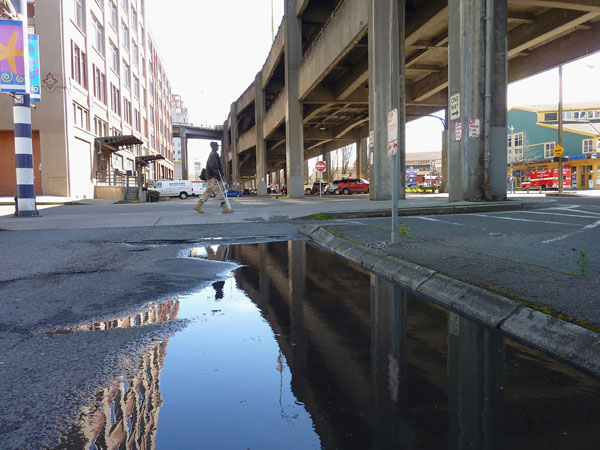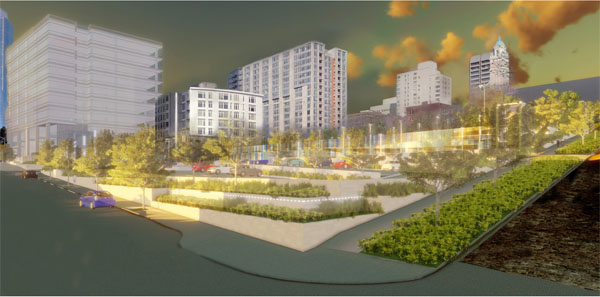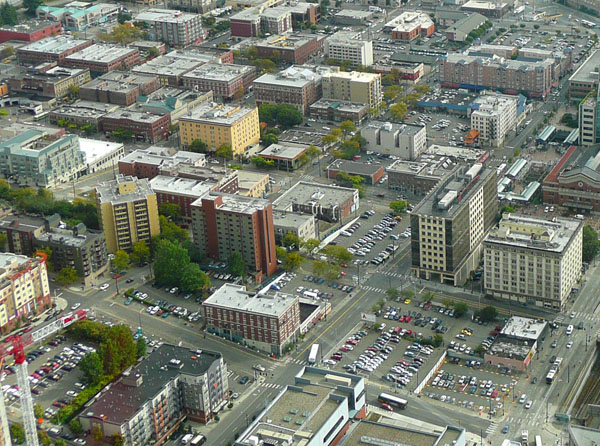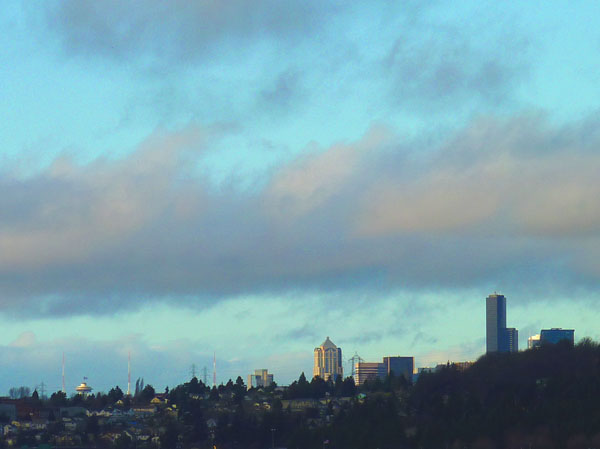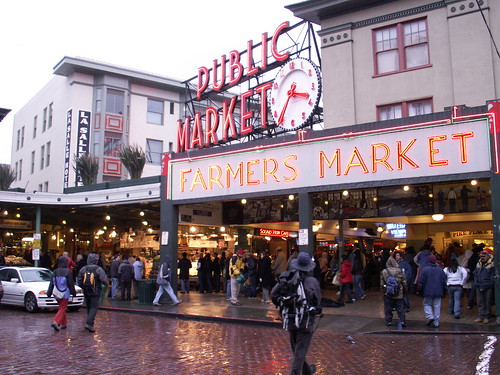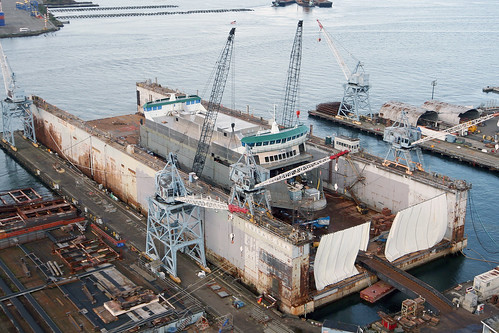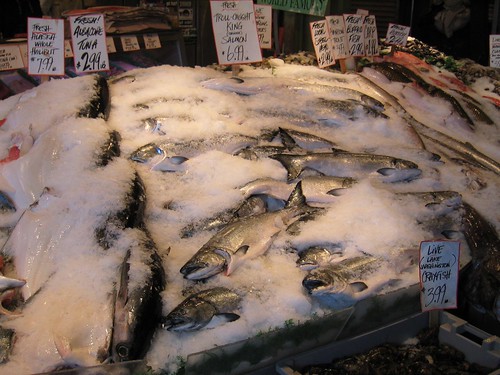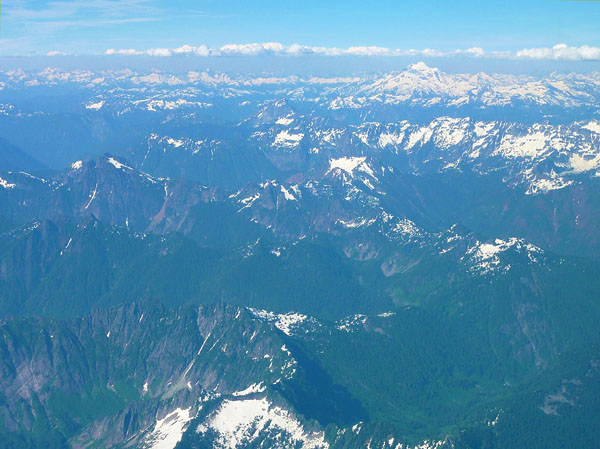
>>>
Earth Day was founded in 1970 (under the coordination of Citytank contributor Denis Hayes). Over the subsequent decades, it has become increasingly evident that most effective way to save the Earth is to make better cities.
When we make better cities, people win and the planet wins.
Therefore, I hereby proclaim the need to establish International City Day.
You heard it here first. Who’s with me?
>>>

>>>
If Nothing Else, Maybe We Can All Agree On This: The Viaduct Is Ridiculous
Just when you thought the saga of Seattle’s deep-bore tunnel couldn’t possibly get any more dysfunctional, it does. Yesterday we learned (1) that a new report commissioned by the Mayor’s office shows that the tunnel would perform worse than widely believed compared to the I-5/Surface/Transit option, and (2) that the Washington State Department of Transportation is no longer interested in collaborating on the tunnel project with the Seattle Department of Transportation.
Nelson Nygaard’s new report puts the lie to the claim that the I-5/Surface/Transit option would cause gridlock, just like the 2008 study before that, and the 2006 study before that. Those who make the gridlock claim have no credibility. Where is the data that backs up their argument?
The new report also shoots down the claim that the I-5/Surface/Transit option couldn’t handle freight traffic, and predicts that severe congestion would occur at the tunnel portals.
Meanwhile, more and more we hear about the rejection of freeways in cities all across the country, including Baltimore, Louisville, New Haven, Buffalo, Cleveland, New Orleans, and Charleston, SC.
And meanwhile, larger grows the data pile showing a trend of car travel leveling off or decreasing.
And meanwhile, more revealed become the details on the ugly truth about how the tunnel portals will degrade Seattle’s urban fabric.
And meanwhile, more are more people want an alternative to car-dependence.
And the State budget implodes. And gas prices rise. And climate change accelerates.
Ah well. Too late. Shux.
>>>
Okay. So if you’re weary of thinking about all that (and who isn’t?), here’s something I think we all can agree on: The Viaduct is one crazy-monumental piece of work. Check it:
>>>
>>>
>>>
More Viaduct pictures after the jump… read more…
. . . wanting good government in their states, they first established order in their own families, wanting order in the home, they first disciplined themselves . . .
CONFUCIUS, The Great Digest
>>>
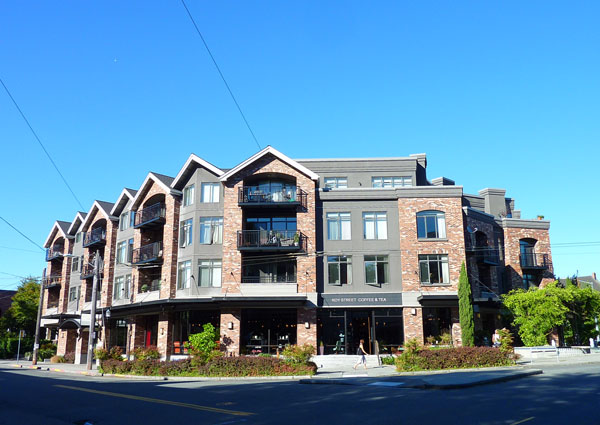
< A quintessential and conspicuous example of "something missing:" the 700 Broadway Apartments, located at the prominent northern terminus of Broadway on Capitol Hill; photo: Dan Bertolet >
Something is missing.
Something is missing from our new houses, apartment buildings, and condominiums.
Something is missing from our new city halls, parks, schools, and libraries; from our farms, offices, factories and stores; from our towns, cities and all the countryside.
Design “solutions” for these places derived from (or rationalized by) the “input” of demographic parameters, productivity analyses, behavioral studies, zoning and site constraints, physical plant inventories, and/or cost/benefit ratios have not provided it. Buildings inspired solely by the possibilities inherent in new materials or techniques of building—no matter how “energy-efficient” or “resource-efficient”—have not provided it.
Buildings and communities are not equations. And by definition, the “specialists” who provide this data know a tremendous amount about very little. “Sustainable design” does include the conservation of energy and resources. But it is not a set of brand-new products which—if we just buy and use enough of them—will enable our culture to continue business as usual.
On the other hand, architecture composed purely of Platonic solids, generated from typologies, deconstructed by shifting grids and skewing axes, or informed by semiotics obfuscates even the question. Architects of this order tend to sequester themselves in their studios. If they emerge, to socialize perhaps, they do so only in the company of other architects. If they read, it is PA, or Record, or Assemblages. If they travel, it is a pilgrimage to a “great building”. This self-referential life leads to a monkish concern with the iconology of fasteners.
Some architects work sixty hours a week not because of a particular passion for the projects they are working on, but because they fear for their jobs. They are under constant pressure to “produce”. The “best” employees in these offices are thought to be the ones who produce the most, the fastest, for the least money. If you have any doubt these principles operate in the field of architecture, read the January 1994 issue of Memo, the national newsletter of the American Institute of Architects. Mark C. Zweig, an “specialist” in the management of architecture and engineering firms, is quoted in Practice Pointers. His suggestions for employee “tough love” include:
- Single out those who always put their own needs above the firms and make it clear you aren’t happy about it. Of course, this doesn’t apply to any person making reasonable requests, such as a day off to attend the funeral of a loved one. …
- Get rid of comp time policies. … People who want to work 40 hours a week should get into another line of business. …
- Adopt a new company motto: “Ask not what your company can do for you; ask what you can do for your company.” Encourage the idea that performance comes first and privileges come after.
Are you feeling strip-mined yet? As Wendel Berry says, “There is an uncanny resemblance between our behavior toward each other and our behavior toward the earth.” The values of industrial culture that allow exploitation of natural resources encourage a similar and equally destructive exploitation of “human resources.”
Architecture created within the conceptual framework of empirical science or self-referential art, or produced or judged by the standards of industrial efficiency, cannot hope to break free of those incomplete, if not inhumane, systems. Both the processes and the “products” are sterile, academic, and alarmingly abstract. It is this abstraction that allows the deft, surgical separation of theory from practice, means from ends, cause from effect, men from women, and body from soul that characterizes contemporary culture, and within it, much of the current practice of architecture.
Alberto Perez-Gomez, in Architecture and the Crisis of Modern Science, says:
Truth – demonstrable through the laws of science – constitutes the fundamental basis upon which human decisions are made over and above “reality,” which is always ambiguous and accessible only through the realm of “poetics.” … Modern man … has forgotten his fragility and his capacity for wonder, generally assuming that all the phenomena of his world, from water or fire to perception or human behavior have been “explained.” … Art can be beautiful of course, but only seldom is it understood as a profound form of knowledge.
Like the ecological crisis, at its core, the crisis in architecture is a crisis of character. It is a failure of conscience, imagination, will and spirit. “I was just following orders,” is an excuse that has often been used in the past to justify participation in the design of atrocious buildings. “I needed the money,” is also popular. “If I hadn’t done it, someone else would have,” is another favorite, usually followed by the unspoken “and I thought I could do a better job.” These excuses will not be overcome by more products, more efficient technologies, more powerful computers, or higher fees or salaries for architects.
What it will take is a change of heart. In his essay “Cities of Passion”, Nehalem, Oregon architect Tom Bender suggests:
How we shape our surroundings demonstrates our values, and can be a tool for healing ourselves and our relations to others. In a sacred society our surroundings are a source of meaning, power and strength which we lack today. To make our surroundings better, our hearts need to be in a better place.
Architecture is about life—life is its subject. It is about the way the things we build can gracefully support our lives. Truly poetic architecture has the ability to reconcile humanity with the essential nature of existence. It can transcend mere functionalized “shelter” to become embodied knowledge of “dwelling”, of well-being. Or, as Aldo Van Eyck put it simply: “What you should try to accomplish is built meaning. So get close to the meaning and build!”
A small way to begin might be for each of us to become aware of and articulate our attitudes about the world, and to the greatest extent possible live, design and work in a way which is consistent with those deeply held values and ideals. By working where we live, within reach of our affection, we will be better able to recognize personal responsibility, and hold ourselves accountable, for the diverse implications of our design decisions. We could then design with our hearts in a better place, with poetic dreams and memories of lived experiences and ideal places, rather than with abstractions of art, science or technology, or justifications of pure economy.
>>>
Rob Harrison, AIA, is a Seattle architect and Certified Passive Houseâ„¢ Consultant. This essay was originally published in the Spring 1994 issue of ARCADE magazine. (And nothing much has changed since then.)

< People matter in Strøget, Copenhagen's Pedestrian Street; photo by the author >
Asking why cities matter is asking the wrong question. If cities mattered post-apocalypse movies and the great television series, “Cities After People†would have very different images of cities. What matters is not cities but people. A city street full of all the right elements—interesting buildings, vibrant storefronts, excellent bicycling infrastructure, great pedestrian only streets, super-energy efficient systems, etc, feels dead and cold without life—particularly without people.
The reason to care about cities is to care about ourselves—our happiness, our health, our children, our grandchildren. When we are inefficient with how we manage and use energy, when we pollute, or create the circumstances that creates unpredictable and more severe weather, when we insist that a great deal of a person’s personal resources must go to expensive housing and cars because we don’t have alternatives, we compromise our happiness and health and we compromise that potential for our kids and grandkids. Making better cities, cities that increase the quality of life for people while reducing resources and improving the environment (i-SUSTAIN’s mission) is fundamentally selfish.
Be selfish—because you matter.
>>>
Patricia Chase, President of i-SUSTAIN, is an urbanist who has spent 10 years researching and sharing global best practices in urban sustainability.
It’s Not A Parking Lot, It’s A Magical Green Urban Oasis!
The Daliesque rendering shown above depicts what the Polyclinic proposes to put in the full-block hole in the ground bounded by Marion, Spring, 7th, and 8th on the west edge of First Hill. Pretty dreamy, no? But I guess it was me that was dreaming when I thought Seattle was done building giant, single-use parking lots in the core of the City.
Today the site provides about 220 surface parking stalls. The Polyclinic is moving into the office building at 7th and Madison that has been empty since completed in 2009, and they want more and better parking next door. The plans (big pdf) call for a surface lot flush with grade on the west half of the block, and a multilevel structure on the east half, for a total of 400 stalls.

< Looking north across the 751 Marion lot to the Landes Apartments, right, and the 7th and Madison office bulding, left; photo: Dan Bertolet >
I get it that the new lot will be an improvement over what’s there now; that people will be relying on cars for decades to come; that if you have to put a parking lot somewhere, locating it next to I-5 is a good option; that the lot will enable productive use of the office building; and that the designers have applied innovative solutions. I get all that, but still find it discouraging that this is the best we can manage to do, given our dire need to wean Seattle away from car-dependence.
Because over the long-term, the overall negative impact of dedicating land with such a high location efficiency to the single use of parking will vastly outweigh any short term benefits. As I have described previously, when we invest in more infrastructure for cars, we not only encourage more car use, but we also sabotage mobility by walking, biking, and transit.
No matter how much green lipstick we put on the pig, the parking lot is still a pig (no offense to pigs, which are fine animals). So in the interest of honest representation, what I’d like to see added to that groovy, surreal rendering above is a gigantic, shimmering exhaust pipe hovering in the gray-green sky, belching out tons of CO2 to the heavens above. Any Photoshoppers out there interested in taking a crack at that?
C200 (x4): Not “global warming†but planetary destabilization: What’s to be done?
Climate destabilization is not just another issue on a long list of vexing problems, but the linchpin issue, that properly handled would lessen many other problems including national security, balance of payments, economic recovery, economic justice and public health.
We need a far-reaching national climate and energy policy executed with wartime urgency. But too much money in politics, media dedicated to entertainment, multiple leadership failures, too much power in the hands of Senators representing more acres and cows than people add up to a system rigged to prevent solutions to public problems and seemingly incapable of repairing itself.
With no prospect for meaningful Federal climate and energy legislation anytime soon, however, what’s to be done? The short answer is that, whatever the prospects, we must keep pushing on every front to: change Federal and state policies, transform the economy, improve public understanding of science, engage churches and civic organizations, reform private institutions, and change our own behavior. But we might also take a page from the Tea Party movement and begin a fierce grass-roots commotion of our own—one powered by sunlight and science.
 As one example, Oberlin College and the City of Oberlin have joined to launch the Oberlin Project. We have four goals: (1) rebuild a 13- acre block in the downtown to U.S. Green Building Platinum Standards as a driver for economic revitalization; (2) quickly transition to carbon neutrality; (3) develop a 20,000 acre greenbelt to revive local farming and forestry; and (4) do all of the above as a part of an unique educational venture that joins the public schools, Oberlin College, a community college, and a vocational educational school. Ten community teams are working on strategic issues such as energy, public policy, finance, community, economic development, and education. The aim is “full-spectrum sustainability†in which the parts reinforce the resilience and prosperity of the whole. Beyond reducing our climate “footprint†and building a more durable economy, the Project will also improve our security.
As one example, Oberlin College and the City of Oberlin have joined to launch the Oberlin Project. We have four goals: (1) rebuild a 13- acre block in the downtown to U.S. Green Building Platinum Standards as a driver for economic revitalization; (2) quickly transition to carbon neutrality; (3) develop a 20,000 acre greenbelt to revive local farming and forestry; and (4) do all of the above as a part of an unique educational venture that joins the public schools, Oberlin College, a community college, and a vocational educational school. Ten community teams are working on strategic issues such as energy, public policy, finance, community, economic development, and education. The aim is “full-spectrum sustainability†in which the parts reinforce the resilience and prosperity of the whole. Beyond reducing our climate “footprint†and building a more durable economy, the Project will also improve our security.
If true security means safety and access to food, water, energy, shelter, health, and livelihood—Americans have never been so vulnerable. Beyond traditional security challenges, we must now reckon with terrorism (homegrown and foreign), a “perfect storm†of food shortages, water scarcity, expensive oil, the multiple effects of climate destabilization, and “black swan†events such as the recent tsunami and nuclear crisis in Japan or the financial collapse of 2008. The upshot, in one analyst’s words, is that “we must squarely face the awful fact that our security will become ever more perilous.â€
We must also face the fact that no government on its own can protect its people and that citizens, neighborhoods, communities, towns, cities, regions, and corporations will have to do far more to ensure reliable access to food, energy, clean water, shelter, and economic development in the decades ahead. This is not to argue against Federal policy changes to promote sustainable development, reform the tax system, deploy clean energy, and improve public transportation—things that can best be done or only done by the Federal government. But communities will have to carry much more of the burden than heretofore.
Sustainability must become the domestic and strategic imperative for the twenty-first century. Its chief characteristic is resilience—a concept long familiar to engineers, mathematicians, ecologists, designers, and military planners—which means the capacity of the system to “absorb disturbance; to undergo change and still retain essentially the same function, structure, and feedbacks.†Resilience is a design strategy that aims to reduce vulnerabilities often by shortening supply lines, bolstering local capacity, and solving for deeper patterns of dependence and disability. The less resilient the country, the more military power is needed to protect its far-flung interests and client states hence the greater the likelihood of wars fought for oil, water, food, and materials. But resilient societies need not send their young to fight and die in far-away battlefields, nor do they need to heat themselves into oblivion.
A revolution in the design of resilient systems has been quietly building momentum for nearly half a century. It includes dramatic changes in architecture, solar technology, whole systems engineering, ‘cradle to cradle’ manufacturing, and smarter growth and transportation systems. Taken to its conclusion, ecological design would radically improve our security, environment, economy, health and strengthen communities while reducing our vulnerability.
National security is too important to be left solely to the generals, defense contractors, TV pundits, and tub thumping politicians in Washington. It will be necessary for neighborhoods, communities, towns, cities, and regions to improve their resilience and security by their own initiative, ingenuity, and foresight. The Oberlin Project is one example, but there are many others at different scales and in different regions. We have begun to join many of these into a “national sustainability network of sites, cities, and projects†which aims to improve local and regional resilience and prosperity. Remove the word “national†and imagine a global network of transition towns, cities, regions, and organizations—a solar powered renaissance of local capability, independence, culture, and real security. Imagine a world, someday, where no child need fear violence, hunger, thirst, poverty, ignorance, homelessness, or heat and storms beyond imagining.
>>>
David W. Orr is the Paul Sears Distinguished Professor of Environmental Studies and Politics the Special Assistant to the President of Oberlin College, and a James Marsh Professor at the University of Vermont. Orr is the recipient of five honorary degrees and other awards including The Millennium Leadership Award from Global Green, the Bioneers Award and the National Wildlife Federation Leadership Award. He has lectured at hundreds of colleges and universities throughout the U.S. and Europe. Dr. Orr will be speaking at Town Hall Seattle this Thursday April 21, 6 – 7:30 p.m.
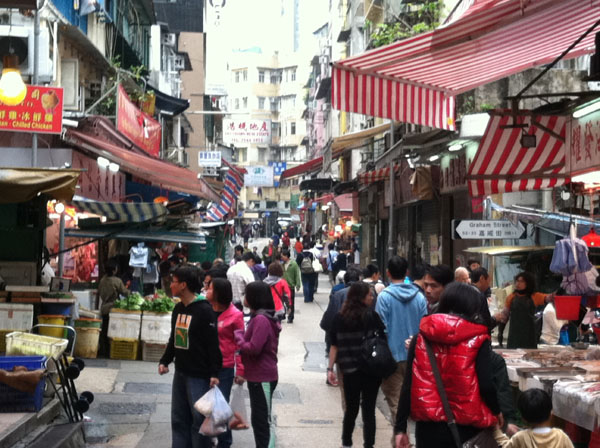
One of the things that struck me most about Hong Kong is just how active and vibrant the public realm was. Everywhere you went, there were people out and about. Meals were eaten in open air cafes, business was conducted in the streets, commercial activity spilled out of shop fronts onto sidewalks and streets, and all of this contributed to a feeling of vibrancy that is all too often absent from U.S. city streets.
It seems like the public realm is where most people in Hong Kong spend the majority of their time. Not just using the public realm to move from point A to point B, but being in the public realm. Unlike in the States, where we more often than not use the public realm to move between destinations, in Hong Kong, the public realm seemed to be the destination.

That being said, amidst the bustling often-chaotic city life, there are also beautiful, unassuming moments of quiet and serenity. Evidence of people carving out a bit of the private in the public realm. My favorite is this picture of someone looking for – and presumably finding – a bit of respite in one of the congested utility-filled back alleys of Wan Chai:
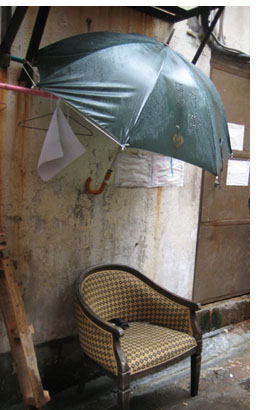 Maybe the character of the public realm in Hong Kong is simply a result of people not having as much individual or personal space as we do in the west, or maybe there’s a deeper cultural meaning associated with valuing the collective over the individual. Whatever the reason, it sure makes for a wonderful urban experience…….one that leaves me feeling that the streets of Seattle are pretty boring by comparison. The energy of Columbia City’s central core, Broadway in Capitol Hill, Market Street in Ballard, and parts of the Seattle Center (sometimes) are pockets of pedestrian-dominated exceptions that come to mind, but my impression is that many of our streets are simply paths rather than places. I don’t think this is a question of design. I think it’s a question of use. And societal values.
Maybe the character of the public realm in Hong Kong is simply a result of people not having as much individual or personal space as we do in the west, or maybe there’s a deeper cultural meaning associated with valuing the collective over the individual. Whatever the reason, it sure makes for a wonderful urban experience…….one that leaves me feeling that the streets of Seattle are pretty boring by comparison. The energy of Columbia City’s central core, Broadway in Capitol Hill, Market Street in Ballard, and parts of the Seattle Center (sometimes) are pockets of pedestrian-dominated exceptions that come to mind, but my impression is that many of our streets are simply paths rather than places. I don’t think this is a question of design. I think it’s a question of use. And societal values.
What I am left wondering is:Â Why is so much of our built environment geared towards getting somewhere rather than being somewhere?
>>>
Scott Wolf is a Partner at The Miller Hull Partnership and an Affiliate Fellow of the Runstad Center for Real Estate Studies in the College of Built Environments at the University of Washington. The interdisciplinary group of Fellows recently returned from a research trip to Hong Kong. Read more about their findings on their blog. (Photos by the author.)

< Improvements in assessed valuation don't mean more property tax revenue in Washington >
In the closing days of last year I made an investment of time that has had a dubious payout. You see, I read the entire Property Tax Levy Manual (careful it’s a huge file). Now I have arcane information about Washington State property tax rattling around my head. So when I read Dan’s recent Citytank post about property tax and Peter Katz’ analysis in Florida I couldn’t help but raise my hand in the back of the class and go “ooh, ooh!.” A little knowledge is a dangerous thing. Or, as wise sage once told me, “in the land of the blind, the one eyed man is king.”
Katz’ argument that developing mixed-use instead of shopping malls will improve the tax base isn’t true in Washington State. Why is that? Hint: it’s the same reason Tax Increment Financing doesn’t work in Washington State either.
Washington state and local government collects its property taxes in the reverse order of the way we usually think of property tax collection. Usually we think of our house or farm as having a set tax rate. Say my rate is 1 percent. If my property is worth $100,000 I pay $1000 in property taxes each year. If the value of my property goes up, I pay more tax. A doubling in my property value from $100,000 to $200,000 means the local government collecting that 1 percent levy on my property will see $2000 next year instead of $1000. This system is called a “rate based system.”
That doesn’t happen in Washington because our constitution requires uniform taxation. The way we’ve chosen to deal with that requirement is to start with a tax district budget first, then assess a levy on all the value in the district uniformly. If a taxing district has an annual budget of $100,000,000 they can levy taxes on all the property value in the district uniformly. That means a guy with a house that is worth $500,000 pays more than I do if my house is worth $100,000 but we still pay the same amount per $1000 of assessed value. From year to year local taxing districts can increase their levy by only 1 percent per year. But the tax on my property goes up or down based not on its increase in value but the budget of the local taxing district.
What also affects my bill is the increase and decrease of the assessed value of all the property in the taxing district. Strangely enough, if the value goes up I could pay less in property taxes because there is more value to tax, and if the assessed value drops my taxes might actually go up for the opposite reason.
No matter how much value I add to a piece of property it doesn’t affect how much taxes flow into local government coffers. Remember, those can only increase 1 percent from year to year. And local taxing districts can’t capture the increases in property value from mixed use, shopping malls, or even public infrastructure improvements.
This is a shame. Because it takes away one of the best arguments smart growth folks have to push for different development patterns: money! In Washington some local officials might not understand the property tax system (remember the land of the blind?), but the argument won’t make it past smart staff at the state Department of Revenue. This uniformity issue in Washington’s constitution also stymies Tax Increment Financing too, making it impossible to capture the increases in private property value from public improvements.
It is important for policy makers to understand how tax revenue varies by land use. But for Washington State to take property tax revenue advantages of the benefits of good planning and development, and Tax Increment Financing, we’re going to need to update our constitution for the 21st century.
>>>
Roger Valdez is currently reading his way through Seattle’s Land Use Code, most recently getting through SMC 23.49 the chapter covering downtown zoning.
Last summer Sarasota County Director of Smart Growth Peter Katz created a buzz with a study showing that on a per-acre basis, downtown mixed-use development typically generates more than 30 times the tax revenue of shopping malls, busting the myth that cash-strapped municipalities ought to bend over backwards to attract mall development.
Recently the Downtown Seattle Association did some analogous number crunching on total property tax (including state, county, city, school district, etc) for a range of uses in Seattle, and the results are similarly dramatic, as shown in the chart below.
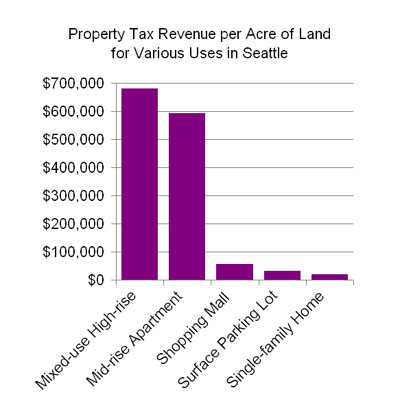
Per acre of land used, the property tax revenue generated by the mixed-use high-rise (Harbor Steps) is more than ten times that of the shopping mall (University Village), and about 20 times that of a surface parking lot (4th and Washington). The mid-rise apartment (Pickering Place) generates about 10 percent less than the high-rise, while the the single family home (Northeast Seattle) generates the least of all.
There’s a “well, duh!” side to these results, given that property tax is generally based on assessed value. But these gaping differences need to be understood in terms of how they impact choices we make regarding how the city is developed.
First, the data should help dispel the impression some seem to have that high-density mixed-use projects are freeloaders. But more importantly, given the well documented environmental benefits of high-density urban infill development in cities like Seattle, the existing property tax structure is tipping the economic scales in a way that thwarts the kind of development we want. The case of a downtown surface parking lot is a particularly egregious example, because the relatively low tax rate encourages owners to sit on underutilized land, impeding its conversion to more beneficial uses. You tax what you want less of.
There is a relatively straitghtforward fix for this deconstructive market distortion: land value tax (LVT). Just like it sounds, an LVT is a levy on the value of the land alone, and not on the improvements on that land. In practice, such a tax would translate to big rate hikes on underutilized land, and rate cuts on land with high-value improvements. Proponents of LVT argue that, in the words of Wikipedia, “because LVT deters speculative land holding, dilapidated inner city areas are returned to productive use, reducing the pressure to build on undeveloped sites and so reducing urban sprawl.”
In effect, an LVT would work a lot like a tax on low-density development, justifiable as compensation for the externalized environmental costs associated with typical low-density lifestyles. Based on that rationale, former Vancouver, BCÂ mayor Sam Sullivan has recently been advocating for a tax system that would shift the property tax burden from high- to low-density neighbhorhoods.
Of course, no matter how smart and sensible such a tax shift may be, because of the massive shake up to the status quo it would cause, it is not likely to be taken very seriously in most political circles. Because, you know, everything’s just fine and dandy as it is, no need to rock the boat, I mean, it’s not like we’re facing the most dire environmental and resource crises in the history of humanity or anything like that… ahem.

Peter Drucker famously said: “You make what you measureâ€. He’s right: effective metrics focus on the outcomes that a group or society values. But still, sometimes things go awry. Unintended consequences can result from diligently pursuing a too-limited set of metrics.
Last month we visited Hong Kong with a small group of Seattle built environment professionals and graduate students from the University of Washington. Hong Kong’s admirable efforts to house everyone, to create transit access for everyone and to preserve nature have led to the most sustainable pattern of land use we’ve ever seen. The way the city has planned and developed is the envy of policymakers trying to contain sprawl in nearly every North American city.
But the constant densification has significant downsides: large new development podiums at rail stations swallow up the public space that was once small pedestrian alleys. The podiums are less permeable, have little or no real public space within them and what public space there is can’t be customized by individuals. Furthermore, in a place where living compactly depends on tight community ties, tearing down old buildings and displacing inhabitants has tremendously disruptive effects on both business and residential communities.
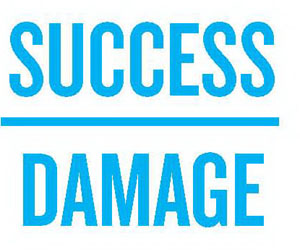 The takeaway? It’s important to define what you want…and just as important to define what you don’t want.
The takeaway? It’s important to define what you want…and just as important to define what you don’t want.
The reciprocal is true in our backyard: the Washington State SEPA review process focuses on only the negative impacts of a project, and often ignores positive impacts, leading to erroneous conclusions about the need for change. We need an environmental review process that reminds us of what we’re getting from rezoning SLU or South Downtown or Beacon Hill.
In any ratio, there are only two ways to achieve a greater result: 1) increase the numerator, or 2) decrease the denominator. Choosing to measure only part of the equation yields incomplete (at best) or truly misleading (at worst) results. We need to remember both as we look at public policy tools and metrics: what do we want and what we have to give up to get there.
>>>
A-P Hurd and Scott Wolf are Affiliate Fellows of the Runstad Center for Real Estate Studies in the College of Built Environments at the University of Washington. The interdisciplinary group of Fellows recently returned from a research trip to Hong Kong. Read more about their findings on their blog.
Most great cities in our world have an engrained sense of place created by the choice of the site for the city. Often cities were sited on bodies of water affording access which in turn “naturally†creates a sense of place from the beginning. Fortunately, more often than not, city designers overtime have celebrated this sense of place by the organization and development of the urban environment.
Seattle has three qualities which stand out in defining its distinctive sense of place, its geographic position, natural setting and its climate. Historically Seattle is located in the northwest corner of the United States, though more recently Alaska claims that distinction. As such Seattle has always been considered removed, a ways away, but its position in a corner contributes to its sense of place. The City is located on two bodies of water, Puget Sound and Lake Washington and within eye sight of two mountain ranges, the Olympics on the west and the Cascades on the east. Mount Rainier stands out as a landmark to the south of Seattle. These natural environments, a visible part of everyday life, impact ones sense of life as well as sense of place.
Seattle, like many cities built on the shores of large bodies of water such as Chicago, San Francisco, Tokyo and Vancouver are also distinguished by being on an edge. Part of ones’ experience of the sense of place is the contrast between a usually vibrant urban environment on one side and the openness to the water on the other.
The climate of Seattle is also distinctive, especially in the context of the larger United States. It rains or drizzles more often than most other cities though in actuality has fewer inches of rainfall per year than cities such as New York or Philadelphia.  But Seattle is known for its grayness however when it is clear it is bright and clear, unlike Philadelphia, Chicago or New York in July. The grayness attributed to Seattle impacts the attitudes regarding the use of color in architecture, There are those who feel that the use of color should be of a subtle nature essentially complementing  the grey light. This is also a tendency in the Scandinavian countries which are a part of the historical culture of Seattle. However there are others who feel it is necessary to introduce brightness and contrast into the environment to off set the grayness, though others would argue that bright colors are more appropriate in climates of brightness in essence a celebration of that type of “southern†climate.
The temperatures are relatively mild, with very little snow in the City (Though a significant amount in neighboring mountains) and summers rarely reach temperatures above 80 degrees and there is no sense of the humidity felt in many east coast cities. Another  quality of the weather is the distinctive, beautiful cloud formations that are a regular, ever changing element of this sense of place.
The position of Seattle at a latitude of 46 degrees also contributes a distinctive quality. In the winter it becomes dark early in the evening and light late in the morning. Most commuting to and from work is done in the dark from November through February, but in the spring and through the summer the opposite is true with light remaining as late as 10 PM. The rain and grey skies contributes to the darkness in the winter and the bright, clear skies in the spring and summer adds to the lightness. This uniqueness contributes to the way of life in Seattle and is a quality again contributing to the sense of place of Seattle.
>>>
Lee Copeland FAIA is a Consulting Principal with Mithun.
Rediscovering cities means coming home. Because over the past few generations, the predominant culture of the United States became drunk on a way of life that negates the city. And we got lost out there.
Since cities first appeared 5000 years ago, no culture in history has so widely strayed from the settlement patterns that sustain the health and spirit of human beings. Our bodies were designed for walking; our brains were designed to learn directly from others; our souls were designed for cooperation and sharing; our hearts were designed to be close to other hearts, and deeply attached to place.
A million plus years of evolution in closely knit social groups doesn’t take kindly to isolation. And isolate is what this country’s most pervasive built environment does. No coincidence either, that our prevailing economic philosophy is one that worships the individual.
But we’re waking up. Human nature is rebelling. A life of strip malls and subdivisions viewed through the windshield doesn’t cut it. People want to live in places that cultivate connectedness—to the physical city itself as well as the people in it. As happens when you walk instead of drive.
And it’s not about size, but form. True cities, small and large alike, have the power to bring people together. To bring them home.
>>>
It’s been 29 days, 67 posts, and 14,000 unique site visits since yours truly started this Citytank C200 series thing. The response was much greater than I ever anticipated, and I thank all of you who contributed. All the pieces that have been submitted to date have now been published, and so I thought it fitting to put a punctuation mark on the end of this first wave of the series with my C200 contribution, above. I plan to continue publishing new C200 pieces as they are submitted, and I encourage people to go for it. Meanwhile, Citytank will start featuring more of the sort of content that made hugeasscity a household word.
As we have seen, the city has undergone many changes during the last five thousand years; and further changes are doubtless in store. But the innovations that beckon urgently are not in the extension and perfection of physical equipment: still less in multiplying automatic electronic devices for dispersing into formless sub-urban dust the remaining organs or culture. Just the contrary: significant improvements will come only through applying art and thought to the city’s central human concerns, with a fresh dedication to the cosmic and ecological processes that enfold all being. We must restore the city to the maternal, life-nurturing functions, the autonomous activities, the symbolic associations that have long been neglected or suppressed. For the city should be an organ of love; and the best economy of cities is the care and culture of men.
…
The final mission of the city is to further man’s conscious participation in the cosmic and historic process. Through its own complex and enduring structure, the city vastly augments man’s ability to interpret these processes and take an active and formative part in them, so that every phase of the drama it stages shall have, to the highest degree possible, the illumination of consciousness, the stamp of purpose, and the color of love. That magnification of all the dimesnsions of life, through emotional communion, rational communication, techonological mastery, and above all, dramatic representation, has been the supreme office of the city in history. And it remains the chief reason for the city’s continued existence.
>>>
Lewis Mumford pretty much invented the concept of the multidisciplinary interpretation of cities when he published The Culture of Cities in 1938. Twenty three years and 12 books later he published the classic The City in History, the last and third-to-last paragraphs of which are reprinted above (emphasis added). It says a lot about Mumford that he concludes his masterwork—widely recognized as one of the most influential books on cities ever written—by twice invoking the word “love.”

< The context of the Mt Baker light rail station is Southeast Seattle, where the transit investment has not been enough to stimulate significant redevelopment - yet; photo: Dan Bertolet - click to enlarge >
There is a lot of discussion on the effect of transit on property values and redevelopment in cities around the country. Usually the boosters claim that transit helps and opponents claim that it does nothing. The truth? As with many other questions the answer is “it dependsâ€.
As we’ve seen over the last decade the demand for living downtown has been increasing as more and more people see this as a viable option and more developers build to the existing demand. But where does this demand come from? And can it be replicated in any part of a region?
The reason for this ability to build more density actually comes from increasing market demand from people who want to live in these areas, and are willing/able to pay the prices necessary to support constructions costs associated with higher density. To build up, developers have to be able to hit a specific price point that justifies their costs and provides an acceptable return on the investment. While all of the future plans TOD hope for density projects, the truth is that without increasing market values, some subsidies that help the developer furnish the required parking or other amenities, may be required, the further you get from an area with higher market values. The same is true for suburban development—in order to make it pencil, subsidies such as roads and utility extensions need to be a part of the deal.
So, like suburban development needing road and freeway access, urban development becomes more valuable with transit access. Markets can be extended. Some of the most successful redevelopment districts and hip neighborhoods are those which are proximate to downtown and were able to use the power of downtown to increase the viability of their redevelopment potential. We’ve seen this in places like the South End in Charlotte or the Pearl District in Portland. Both of these areas have transit connections that have pulled the downtown, which has the major market, a little closer. Ultimately this is where streetcar and light rail corridors are helpful.
Typically, 15 minutes is the time transit can travel before the market extension starts dropping away. Further down the line, development is possible and still warranted, however it won’t be supporting denser steel frame buildings. But why does this matter? If we want to think of creating walkable communities, transit needs to be focused on connecting major destinations. The major destinations are generally employment centers with less opposition to development and the ability to grow up instead of out. This means development closer to downtowns is better, and, for that matter more transit supportive. Suburban oriented transit doesn’t do as much work carrying people or pushing buildings up.
So with that being said, let’s rethink how we’re developing transit today. While we’ve invested further in roads and other subsidies for sprawl, its time that the pendulum swung back and provided opportunities to build up assets around our regional economic engines, creating a critical mass for the next generation and their economic future. Let’s use transit to extend markets where we can.

< Mount Baker Light Rail Station in Souteast Seattle; photo: Eagle Eye Aerial Photography via Sound Transit - click to enlarge >
>>>
Jeff Wood is New Media Director and Chief Cartographer at Reconnecting America in Oakland, CA. Dena Belzer is president of Strategic Economics in Berkeley, CA.
C200: Urban Fabric: The Form of Cities
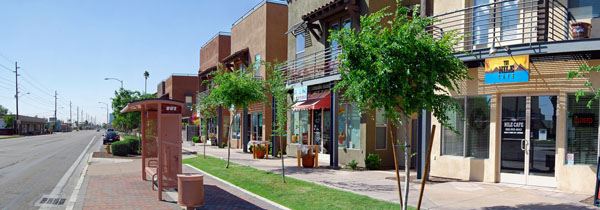
< Roosevelt Row in Phoenix, AZ: a half block of fine grain lost in a sea of course grain; photo: Mario Grey - click to enlarge >
Urban fabric is the physical form of towns and cities. Like textiles, urban fabric comes in many different types and weaves.
Coarse grain urban fabric is like burlap: rough, large-scale weaves that are functional, but not usually comfortable. Such places consist of large blocks, predominated by vehicle dependent retail and corporate centers; or multi-block mega projects dropped on a city without integrating the surrounding city or community. Not only do coarse grain fabrics NOT provide many opportunities for interconnecting; the fabric itself is usually inhospitable to interaction. In this regard coarse grain acts as a barrier for all but those who are there for a specific purpose.
On the other hand, there is fine-grained urban fabric. Like high count Egyptian cotton, fine grain urban fabric can feel luxurious and wants to make people linger in or around it. It consists of several small blocks in close proximity. Within each block are several buildings, most with narrow frontages, frequent store fronts, and minimal setbacks from the street. This offers many opportunities for discovery and exploration. There are virtually no vacant lots or surface parking. Also, as there are more intersections, traffic is slower and safer.
Fine grained urban fabric is not imposed on a community like its coarse cousin. Rather, it evolves over time, responding to what came before, and adapting to what came afterwards. This evolutionary process creates places that are dynamic and reflective of a neighborhood’s changing needs, able to seamlessly evolve over time from lightly developed residential areas to mixed-used retail to dense urban core. In this way, they are far more resilient than mega-projects that, when they lose a single tenant, often fail.
Yuri Artibise is an urbanist and blogger from Phoenix AZ.
C200: When Does A Suburb Become A City?
When does a suburb become a city? Because that’s what the next half century is all about.
We spent the last half of the 20th-century creating suburbs – the stuff we city types dismiss as sprawl. But, sorry, it’s not dismissable. People love it. Always have, and still do.
Whenever a society gets rich enough, people buy space. Hence the suburban instinct that flowered for the middle classes in the age of the streetcar – the technology that expanded cities exponentially in the 1890s.
Vancouver, founded in 1886, one of the first places to adopt electric-streetcar technology, and so shaped itself around the villages that formed wherever the streetcar lines went. And though we may look so mid-20th-century modern with all our concrete high-rises, we are still function more like a late-19th century city. And also because we didn’t build freeways into our core.
Unfortunately our surburbs did build freeways, wide roads and parking lots – lots of ’em and not a lot of transit - making themselves almost totally dependent on the auto and truck for almost everything. Today, those suburbs are vulnerable. Having driven out all other transportation choices except driving, they are now hostage to the price and availability of oil.
So what to do? What distinguishes the central area of Vancouver, given the imits of water and mountains, was to build on the streetcar fabric and make high-density development sufficiently attractive that all classes of people could imagine living in it. Vancouver provided enough practical transportation choices – walking, cycling, transit, taxis – sufficient to accommodate more people without accommodating more cars.
The rest of the region has decided that it too would like a bit of what Vancouver has. In the regional town centres from North Vancouver to Langley City, they’re embracing density, transit and the public realm. High-rises sprout all along the rapid-transit lines. In our largest municipality, Surrey, they prohibit the use of the word ‘suburban.’ They’re using public investment - a new library, a new city hall, walkable public spaces, more transit – to stimulate private-sector development, to concentrate into true ‘downtowns.’
The suburban ideal may remain dominant in the older subdvisions, but they too like the idea of choice – in accommodation, workplaces and transportation. And they’ll need to, if the suburb is to have a future.
But then they’ll call it a city.
>>>
>>>
C200: Affordability Is Critical To Great Cities!

< The Low-Income Housing Institute's Bart Harvey apartments for low-income seniors in Seattle's South Lake Union neighborhood; photo: Dan Bertolet - click to enlarge >
Great cities are places where people can live, work, go to school, spend time with family and friends, and have access to what they need and want.
Notice I said that great cities are places where people can live AND work. The fact is that many people who work in Seattle live somewhere else. (The same is true in many major US metropolitan areas.)
Why do people live so far away from their jobs? For some, it’s a choice based on the lifestyle they want. But for many people, it’s not much of a choice – we have to live where we can afford the rent. And without enough affordable apartments and homes in the city, where most of the jobs are located, many working people spend hours (and lots of money) commuting from far away.
Living far from a job often means spending less money on rent, but more on transportation. For working people in the Seattle, the total cost of housing and transportation averages more than 60% of household income! That doesn’t leave much for other necessities, much less discretionary items.
The money is a big concern for people who live from paycheck to paycheck working at jobs that we all rely on (health care support, child care, retail, janitorial, hospitality, and so on) – and so is the time that working people should be able to spend with their families.
The economy, the environment, and community stability all benefit when people have affordable choices of places to live close to their jobs, to services they need, to their schools and communities – and the city thrives. We need more housing choices that are affordable for everyone!
>>>
Sarah Lewontin is the Executive Director of Housing Resources Group, a Seattle-based nonprofit provider of excellent affordable apartments that enable low-wage working people, their families, and low-income seniors to live independently throughout their lives. She serves on the Boards of ULI-Seattle (where she co-chairs the Housing Affordability Task Force), and the Housing Development Consortium of King County, and is an active member of Leadership for Great Neighborhoods.
C200: In The New “Rentership Society,†Cities Offer The Best Means To Share Scarce Resources
Theoretical physicists have recently garnered attention for asserting that cities universally become more economical as they increase in size, as contrasted with living organisms, for which physical mass and efficiency are inversely proportional. While in the abstract this assertion begs the question as to the city size at which the relationship might break down (Two Tokyos? Ten Tokyos?), on a more basic level it underscores the assumption that cities, if properly organized, can provide an efficient template for the provision and sharing of goods and services. Moving from global abstraction to local context, this thesis is rather intuitive when applied to the planning and land use decisions facing most American metropolitan areas, including the Seattle region.
For metropolitan areas like Seattle, where low-density suburban development is the dominant land use, greater urbanization creates an opportunity to better utilize increasingly scarce economic, environmental and economic resources. The past decades of suburban expansion have created some incredible inefficiencies in land utilization, housing, infrastructure and transportation that were generally deemed acceptable in an era of rapid economic and population growth.
Today, in an era of increasing economic and resource scarcity, the financial tradeoff of low-density suburban development is no longer acceptable to a majority of the population—particularly to the next massive wave of consumers, the Millennial generation born to the Baby boomers. This generation will almost certainly be the first in our nation’s history to be less well-off than their parents, as defined by personal wealth, if economic projections are correct. The costs of supporting a massive generation of retirees, bearing the burdens of enormous levels of public and private debt accumulated over the past decades, and increasingly expensive sources of energy are economic headwinds that will not abate anytime soon.
In addition, in an increasingly networked world with access to nearly every conceivable type of information at one’s fingertips, Millenials tend to prefer access to experiences over ownership of physical goods. While ownership as concept is by no means going extinct, a more urbanized future offers Millennials the ability to offset the diminution in individual financial wealth with an ability to more easily access a wider range of goods, services and experiences than did their parents a generation before.
While there is great debate as to the ideal level of density, mix of land uses, and degree of connectivity between uses that are needed to support a more efficient alternative to the suburban development, the attractiveness of a city can in large part by judged by the ability of its citizens to effectively access and share resources, including those classically defined as community facilities (open space, recreational facilities, transportation) as well as “third places†to relax, socialize and exercise that are typically not publicly owned. The inter-relationship between forced frugality and increasing emphasis on an experientially-driven economy provide a great opportunity for cities to flourish if given the necessary political support required to provide successful urban models as alternatives to the dominant suburban ones.
>>>
Chris Fiori is an urban planner and real estate development analyst with Heartland LLC.
C200: A Successful Region Needs Successful Cities
The future of our region depends on the success of our many different cities.
Passion for this place energizes lively debate about the best ways to grow – but often obscures important common ground. Focusing growth in all types of cities has the overwhelming embrace of our region’s people and elected leadership.
VISION 2040 spells out details. Built on an environmental framework, the focus for most future jobs — and homes for most of the 1.3 million more people expected by 2040 — is cities.
It’s about people being attracted to lively and diverse urban places, and more transportation choices – including 100% more transit. We can preserve rural areas, sustain our waterways, our atmosphere — and make cities even better places to live.  Tax dollars go further.
Two new efforts help:
Growing Transit Communities provides resources to support neighborhood planning. Plans grow more sustainable communities around about 100 new transit centers over the next 20 years.
A Metropolitan Business Plan to capture new low carbon jobs through something called BETI. The Brookings Institution is helping us – and making this region a template to emulate.
Let’s grow our cities with more action, built on the strength of regional common ground and lift.
>>>
Bob Drewel is the Executive Director of the Puget Sound Regional Council, which does regional transportation, land use and economic development planning with King, Pierce, Snohomish and Kitsap counties and the 82 cities and towns within them.

< Georgetown, Washington D.C; photo: paulaloe via Flickr >
The secret was to put the key in the accessory position so that the steering column turned freely. Then the little blue Honda was free to slip stealthily under the silent limbs of the pin oaks, a shadow moving into the night. And Mom never never did wake to shadows.
When you were half-a-block down the street, it was safe to crank the ignition. Turn on the lights, make note of the gas gauge. You’re on your way.
Drive the the six lane boulevards bounded by stripmalls to collect your friends, steer the volume higher on the stereo and turn toward the city.
1am: Georgetown is always first. Since Smash is closed, you wander around among the student housing, hoping for an invitation into an open door. More often than not, you just climb the Exorcist steps before turning onto Key Highway, swallowed by the city.
2am: The clubs are closing. Youthful yells and sloppy sex spill out on the street. Congressional aides hike their discoball skirts, and duck between dumpsters to relieve their bladders. At the time you couldn’t figure out why they didn’t go in the club; now, having been in a few, you know; the street was safer and cleaner. Smart girls; doubtless Democrats.
3am: The night is winding down; the voyeurs are heading home, taking it slow. Cops would ruin the night. Your arm, dangling out the window, is cooled by the exhaling Canal Road canopy. The double yellow line extends beyond the headlights and into the night.
4am: Why did you never learn? You always ruined the night with Denny’s. Refill the engine, not too much. Drive past your house, a bit up the hill. Line it up. Kill the headlights and put it in neutral. Let your eyes adjust, let out the brake, and drift on home.
>>>
Brice Maryman no longer steals cars. Honest. He is now gainfully employed as a landscape architect in Seattle and is the past board chair of Great City.
C200: The Best Is Yet To Come, Seattle

< Seattle sidewalk; photo: Mike Kent >
In The Secret Lives of Buildings, architect Edward Hollis wrote: “Architecture is all too often imagined as if buildings do not—and should not—change. But change they do, and have always done. Buildings are gifts, and because they are, we must pass them on.â€
I would extend this sentiment to cities and, specifically, to Seattle. Ours is a city whose gifts are clear to even the most casual passer-through: an admirable balance of natural beauty and urban density, a thriving arts scene, and a meaningfully engaged citizenry, to name a few.
I will highlight one more exciting aspect of our city: its obvious potential to become even better. Seattle has the unique opportunity to make the leap from “great†to “world-classâ€, and I am excited to contribute my small part toward its evolution.
Rather than lamenting the relative meagerness of Seattle’s transit systems compared to, say, Portland’s, let’s celebrate our nascent light rail and streetcar as the kickstart of what could become a magnificent transportation network. Let’s learn from our transit forebears how to improve own transit network, perhaps itself one day a model for excellence. For now, though, let’s recognize our transit network for what it is: a work in progress.
Let’s seize the opportunity presented by Seattle’s future transit hubs and underbuilt core neighborhoods like Denny Triangle and South Downtown by working together to encourage higher-density development that enables future Seattleites, as Mayor McGinn might say, to “walk, bike, and ride†in their daily commutes.
Let’s honor our city’s rich architectural and cultural history by preserving vestiges of Seattle’s past and weaving them into its future as a foundation for sustainable growth.
Seattle is not yet a finished product—it’s not even close. It will not be the same place 20 years from now, or even five years from now. It will be even better.
So, breathe, Seattle. Smile! We are an incredible city, and our best has yet to come.
>>>
Mike Kent is an urban planner and Director of Kent Planning Solutions, based in Capitol Hill.
C200: The Business Of Tackling Climate Change

It is tough to think about global warming today. As I was drafting this, the earth was shaking, coastal villages in Japan were washed to the sea and the earth was knocked off its axis by 6.5 inches. But, think we must, and then pull all our energy in the direction of a low carbon future. A growing alignment of smart businesses, environmentalists and the military know that our common interests are truly entwined. And we will need to tap every last ounce of the power of both business and NGOs if we hope to have a chance of saving ourselves.
In our daily life, we all support businesses of some sort. Businesses are an essential thread of societal fabric. Businesses can thrive and contribute to the right side of climate change—many do. The literature is replete with businesses investing in energy conservation, smart commuter strategies for their employees and authentic “green†behavior. This saves resources, retains employees and attracts green-minded customers. We can help businesses by making programs less opaque, more accessible, easier to access—and, as reliably discerning customers.
The times are troubling, but the sun will rise tomorrow. And if the enviros and the business community work together we’ve still got a good shot at transforming our cities quickly and effectively enough to make a difference.
>>>
Charlie Cunniff works on the Seattle Climate Partnership and as the environmental specialist on the Business Advocacy team at the City Office of Economic Development.

< The author, second from right, performing with the George Metesky Ensemble at Max's Kansas City, 1983: photo by Stephen Blos >
I grew up in a small town in northeast Ohio. It was an idyllic childhood, really, not unlike the one depicted in Arthur Ransome’s Swallows and Amazons. A Colonial house on a tree-lined street. A walk or bike ride to school. Sailing small boats, paddling canoes. Roaming the woods with good friends. However, something started to happen when I moved to the big city for architecture school. There was a lot of friction against my established view, shoulder-rubbing, boundary-stretching, and mind-expanding, bumping up against extraordinarily smart and passionate people who became friends, collaborators, mentors and sometimes clients. I’ll mention a few: In Toronto Peter Prangnell, Daniel Libeskind, Alberto Perez-Gomez, Tom O’Brien, and Philip Beesley. In New York City Isamu Noguchi, Alfredo De Vido, Christian Marclay, Sussan Deyhim, Glenn Branca, and Vincas Meilus. In Seattle Dan Bertolet, Joe Zajonc, David Rousseau, Norma Davidson, Kathryn True, Patty Borman, Chuck Pettis, Alan Durning, and Alex Steffen. Intensely values-based (rather than form-based) design. Phenomenological architecture. Noise, bricolage, and free improvisation. Ecological design, dowsing, carbon-neutrality and sustainable urbanism. Would any of this have crossed my path had I stayed in a small town? Unlikely. It took cities to do that. Coming face-to-face with these people and ideas changed my life for the better. For these cities therefore, I am truly indebted. Toronto, New York, Seattle, thank you.
>>>
Rob Harrison AIA, architect and Passivhaus consultant, played guitar in a punk-jazz band with Dan Bertolet before he was fashionable. He and his car-free family park their bicycles in a green-roof garage he designed. He aspires to do only multi-family Passivhaus projects in the city, but will be pleased to design your Passivhaus cabin in the woods in the meantime, while the world catches up.

Cities are a unique fabric of interwoven networks. They present opportunities for relationships that might not otherwise exist and take the concept of community to a whole new level, enveloping the social, economic and cultural fabric of place. The richness within the social and cultural aspects of each of these unique networks works closely together providing a more meaningful experience for the community and people within it. From a structural standpoint, cities are dense populations that share resources. From a humanistic approach cities bring together a wide array of people to solve complex problems. And, most importantly, cities provide a meaningful purpose and existence for its inhabitants.
Urban cities have one major advantage over suburban communities… efficiency. Cities allow for efficiency of space, materials, and time. They are environmentally sustainable because they minimize impact by creating density instead of sprawl. But their sustainable nature doesn’t end with environmental impacts—cities are sustainable communities.
Cities become the breeding ground for innovation. Within a city you will find individuals working to cure cancer, build the next aeronautical advancement, and improve the pertinent social services that provide health, education and opportunity to all individuals. Cities bring together millions of individuals that want to better their own community as well as the larger social issues that may be affecting communities around the globe. On the lighter side, cities provide quick, efficient and meaningful gestures of space and opportunity for people to gather together to enjoy the finest food, entertainment, culture, education and services.
True sustainability isn’t about using the greenest products. It is about living all aspects of your life in a sustainable manner. True sustainability is about sustainable relationships, sustainable businesses and sustainable environments. Cities bring all of these aspects together to work in a cohesive manner.
>>>
Mark R. Schuster is founder of The Schuster Group, a Seattle-based real estate investment and development firm, and author of Lofty Pursuits: Repairing the World One Building at a Time.
Green buildings are great. Now we need to connect them together into smart, green, and semi-autonomous districts to create a resilient city.
We know it can work here. The recent Yesler Terrace Sustainable District Study shows that a green building/sustainable district/centralized infrastructure hybrid can provide high reliability and high sustainability for the same or lower costs than traditional infrastructure. For example, by treating and reusing wastewater on site we can reduce Yesler Terrace’s future potable water use by up to 50 percent and wastewater flows by up to 70 percent for less cost than paying Seattle’s sewer and water rates. The study also shows that a district thermal loop fueled by renewables could provide the hot water, space heating and cooling needs of Yesler Terrace redevelopment. The energy for the loop could be cost-effectively provided by sewer heat recovery, solar hot water, and geo-exchange. Where appropriate the energy district could even be extended to willing neighbors.
Adding such district systems to Seattle is the next rational step on the path to a resilient and sustainable city. Smart, self-organizing systems with real-time monitoring and feedback loops will play a role. But it is not just technology alone. Sun and shade, rain and wind, soils and vegetation are also foundational no-tech solutions that contribute to resilient and beautiful district infrastructure.

< The Hammerby Sjostad brownfield redevelopment in Stockholm employs numerous sustainable district strategies. >
Districts designed for resilience recover more quickly from extreme events – whether earthquakes, tsunamis, storm surges, rainstorms, snow, or heat waves. If parts of the centralized systems go down, the resilient districts can supply much of their own needs. If district systems have difficulties, the green buildings or centralized systems can serve as temporary backups. All of them working together create a robust and flexible buffer that helps to deflect the impacts of rare but predictable disturbances.
A resilient Seattle of green buildings, semi-autonomous districts, and centralized backbone infrastructure would be adaptable and sustain itself over time. It would elegantly connect low-tech/no-tech natural systems with high-tech water, energy, mobility, and communication systems. At each scale, citizens would see natural systems working together with sophisticated technologies to create highly livable and aesthetically beautiful surroundings. As a design strategy it would future-proof Seattle by improving the likelihood that the system and its services will perform successfully under a wide range of future environments and day-to-day conditions. And as the Yesler Terrace study shows, district systems can thrive in direct competition with the costs and risks of business-as-usual.
>>>
Steve Moddemeyer is a Principal for Sustainable Development at CollinsWoerman in Seattle and co-authored the Yesler Terrace Sustainable District Study.
C200: How Preservation Ethos Plays Into A Great City
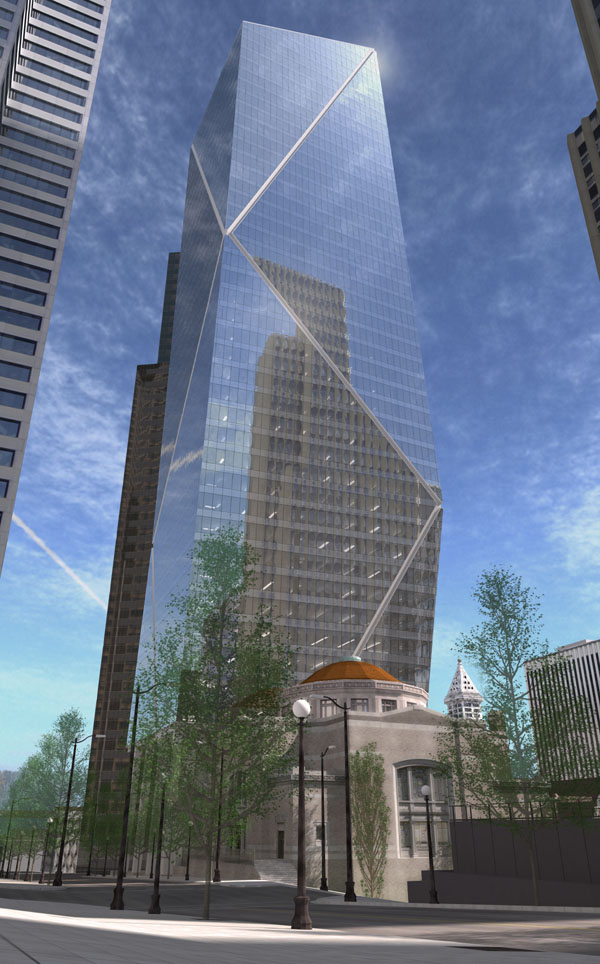
< As part of a 2007 development deal for the tower rendered above, downtown Seattle's First United Methodist Church - completed in 1910 -was saved from demolition. >
I often have to dispel the common assumption that preservation is about saving old buildings. That’s partly correct, but falls well short of what the movement actually represents. I’m sure the notion of saving buildings that resides in many of the public resulted from either reading about efforts to save a particular building, or their own involvement in a struggle to save a school, church, favorite building or whatever.
Preservation traces its modern roots to the saving of Mount Vernon. But today the issue for preservationists is less about saving a particular building or even a whole neighborhood district. It’s about “placeâ€. Place does matter.
So what is place? It’s the combination of factors that make any collection of buildings special whether it’s your own neighborhood, or the Pike Place Market. Yes there are buildings that help create that “place†but it goes much deeper. Place happens in neighborhoods and communities whether there is a historic building or not. But for preservationists the built environment is the glue that holds it together.
The preservation movement has understood for some time it’s not just about saving a historic building as a stand-alone effort. It’s about making sure that the special qualities that define an area are preserved along with the important examples of architecture so future generations can enjoy the place.
After all, sustainability starts with preservation.
>>>
Kevin Daniels is President of Daniels Development, and serves on the Board of Trustees for the National Trust for Historic Preservation in Washington, D.C.
Chapter 23.48 Seattle Mixed Feelings
Seattle has a long and storied history with private developers similar to many other cities on the West Coast. In fact, the founders of Washington and other states in the region were so worried about private railroad developers using the public’s credit to finance their projects, they wrote a prohibition against the use of public credit to benefit private projects into their state constitutions. Cities had fallen all over themselves hoping to be part of the next expansion of the railroad system and they lent their credit to projects that ultimately failed. The founders were determined that it never happen again.
Fast forward to the recent past and you’ll find a similar saga playing itself out in the South Lake Union neighborhood of Seattle. A billionaire from Microsoft, Paul Allen, buys up acres of property in the funky industrial dead-zone of South Lake Union with an eye toward developing the Seattle Commons, a massive redevelopment of the area centered on new open space. The local citizenry are asked, twice, to contribute to the plan but reject it twice, largely on the grounds that somehow, even with all the public benefits of the Commons Project, a billionaire would profit at the public’s expense.
Today, Allen’s Vulcan Real Estate, is trying to develop the 11.5 acres in the portfolio left over from the Commons project. And today the same battle lines are drawn. Somehow, the argument goes, Allen is going to make scads more money with the zoning changes Vulcan is seeking for the South Lake Union properties they own. Why should the City grant rezones or allow the massive shift of traffic now underway on Mercer to benefit a billionaire?
McGinn And Conlin In A Parallel Universe
By coincidence, on Monday my inbox received contributed Citytank posts from the two most powerful politicians in Seattle—Mayor Mike McGinn and City Council President Richard Conlin. Clearly the Universe meant for their posts to run back to back, adversarial history notwithstanding.
And that juxtaposition got me thinking about how tragic it is that these two capable, passionate, and forward-looking public servants have not been able to find a way to work together for the good of Seattle. Because a unified Council and Mayor’s office driven by a commonly held set of sustainability values might actually stand a chance of getting something meaningful accomplished. Divided we fall and all that.
The fact is, McGinn and Conlin probably agree on about 99 percent of everything. This shouldn’t be like trying to get Dumbledore and Voldemort to play nice. But sadly—and yes, stupidly—a single issue has negated all the commonality: the deep-bore tunnel. Sometimes it seems that all the toxic divisiveness created by the tunnel could end up doing more damage than would be done by the tunnel itself.
But if McGinn and Conlin could get beyond their differences and start tackling issues as a team, the potential would be huge. With their combined constituencies, who would stand in their way? Plus, a united Seattle leadership would present a much more formidable political force when it comes to dealing with the Seattle-bashers in Olympia.
Granted, that’s a big if, but stay with me. What McGinn and Conlin need is a fresh, untainted issue that they could both get behind together without getting bogged down in baggage. And I have two suggestions, each of which has the potential to play a massively positive role in transforming Seattle for the better over the long term:
- Yesler Terrace: This will be a brand new 30-acre, mixed-income neighborhood built from the ground up, and an unprecedented opportunity to implement our best thinking on sustainable design. But the economics are such that creating a world class example of cutting-edge sustainable development at Yelser Terrace is not going to happen without the City stepping up in a big way. Southeast False Creek in Vancouver, BC, is a recent example of what we should be aspiring to match or surpass.
- Transit-oriented Communities: Our public investment in light rail will never pay off until we start doing a better job of facilitating transit-oriented development at the stations outside of downtown. These areas represent the City’s best opportunities for accommodating growth in a sustainable manner, but so far, little progress has been made. What’s needed is a focused, city-wide effort to physically plan the sites, establish incentives, and invest in infrastructure. Examples abound nationwide.
Okay, back to this Universe. It may well be that the McGinn-Conlin feud is a lost cause. But I’m putting out this bit of “what if” happy talk anyway because there’s so much at stake. We can’t afford to let wedge issues sabotage our power to make progress across the spectrum of sustainable urbanism. Call it the Citytank challenge: to unite, not to divide.
C200: This Is What A City Makes Possible

< On E Pike St between 11th and 12th Ave on Capitol Hill, two new mixed-use residential buildings that replaced parking lots integrate well with the existing urban fabric; photo: Dan Bertolet - click to enlarge >
Choices about reducing carbon are shaped by public policies. Carbon emissions are lower in communities that are compact and that provide access via transit and non-motorized travel among jobs, homes, and commercial and recreational activities. Density by itself, however, only works with community.
Seattle has already taken great strides in developing communities that are compact and sustainable over time. We are also in a great position to move further in this direction, but it will take careful and thoughtful public policy to ensure that we hit the sweet spot that matches denser communities with high quality of life.
Like most American cities, Seattle lost population between 1960, when it had 557,000 people, and 1990, when it had only 516,000. Most of Seattle is zoned for single family residences, and, except for downtown, most of the rest was dominated by low rise apartment and commercial buildings. Seattle never suffered wholesale abandonment of neighborhoods – population loss mainly reflected smaller household sizes, with most dwellings still occupied. With a downtown that never totally lost steam, and a network of thriving neighborhoods with modest commercial hubs at their centers, Seattle was well-positioned for success when the City’s leaders embraced the principles of Washington’s Growth Management Act and a more urban community.
Seattle’s Comprehensive Plan, adopted in 1994, projected adding 72,000 households over the next 20 years, and called for a major reinvestment in downtown neighborhoods, allowing greater height and encouraging more residential development. And it called for developing the centers of most other neighborhoods into ‘urban villages’ with several stories of housing-over-storefront buildings.
Change alarms many people, and this was no exception. Many residents felt their single-family neighborhoods were at risk, and embraced a nostalgic vision that rejected the new plan. Resistance peaked in 1994-1996, when neighborhood meetings drew hundreds to attack City leadership and opposition leader Charlie Chong won a special election for an open Council seat vacated by one of the advocates of the Comprehensive Plan.
Fortunately, there were many who were attracted by this vision, and Mayor Rice’s administration came up with an ultimately successful way to attain it. The Mayor and Council approved giving 37 designated centers for population growth the opportunity to develop neighborhood plans. Communities got guidelines for participation, a toolbox of ideas, and money to hire their own planners. They were asked to decide whether they could meet their assigned growth targets, what land use changes they would need to do so, and what other actions would ensure continued neighborhood livability.
The response was extraordinary. While there were a few rough spots and conflicts, given the opportunity to calmly look at how new density would impact their communities, 20,000 people participated and every one of the neighborhoods accepted the growth targets and zoning changes needed to accommodate them. This was an extraordinary victory for growth management — and for the Seattle process when run properly.
Neighborhoods also came up with an agenda for the City: some 7000 recommendations for investments, policy changes, and actions. For the last ten years, the City has worked to fulfill these expectations, and has successfully accomplished the majority, focusing on the highest priorities.
The lesson is that density can work, that people will accept it, and that thoughtful engagement and responsive government make the difference.
Seattle now has 55,000 residents living downtown. Most neighborhoods have reached their growth targets, and some have exceeded them. There has been no resurgence of NIMBYism – in fact, communities continue to embrace change, especially those that are now receiving or will soon receive light rail service.
As Seattle thinks about its next moves towards building communities that are not auto-dependent, adding the next increment to our population, a lot will ride on how neighborhoods are engaged in the discussion. Some additional land use changes will be needed – but most of them will increase density on property already zoned for mixed use of multi-family. As neighborhoods found out in the earlier round, there is neither need nor reason to focus on single family areas – density works better in areas that already have some development.
Additional heights? In some cases. Generally, once you get over a few stories, additional heights don’t add much to the vitality of the street environment or community, and there are limited areas where tall buildings really work. But in most urban villages, 6 to 8 story buildings work from a street and community perspective, and add significant housing and support for neighborhood small businesses. Some cities that are models of dense urban development – like Paris and Copenhagen – have managed density and transit very well with heights limited to 6 to 8 stories.
The bottom line: there is a remarkable amount of density that can be accomplished while making communities better places to live and without arousing significant neighborhood concerns. These neighborhoods will need parks, libraries, and other community facilities. And they will need jobs and businesses, and developers that are willing to make investments, and transportation networks that provide workable alternatives.
>>>
Richard Conlin has been elected four times to the Seattle City Council, and currently serves as President. He was one of the founders of Sustainable Seattle, and a participant in the neighborhood plan process – before being elected and Chairing the Committee that oversaw the approval process.

